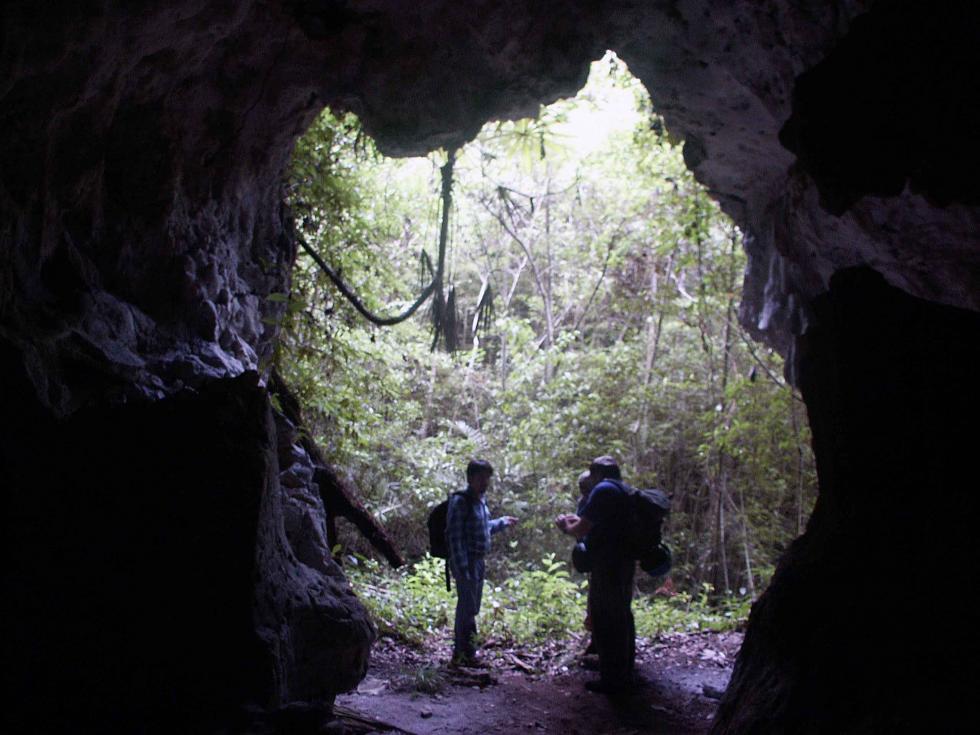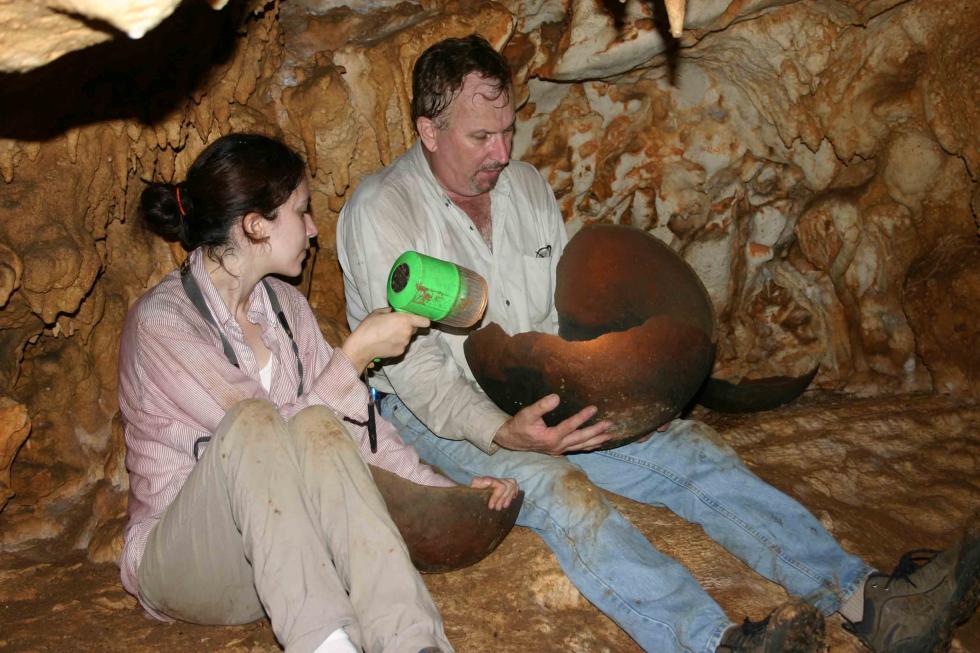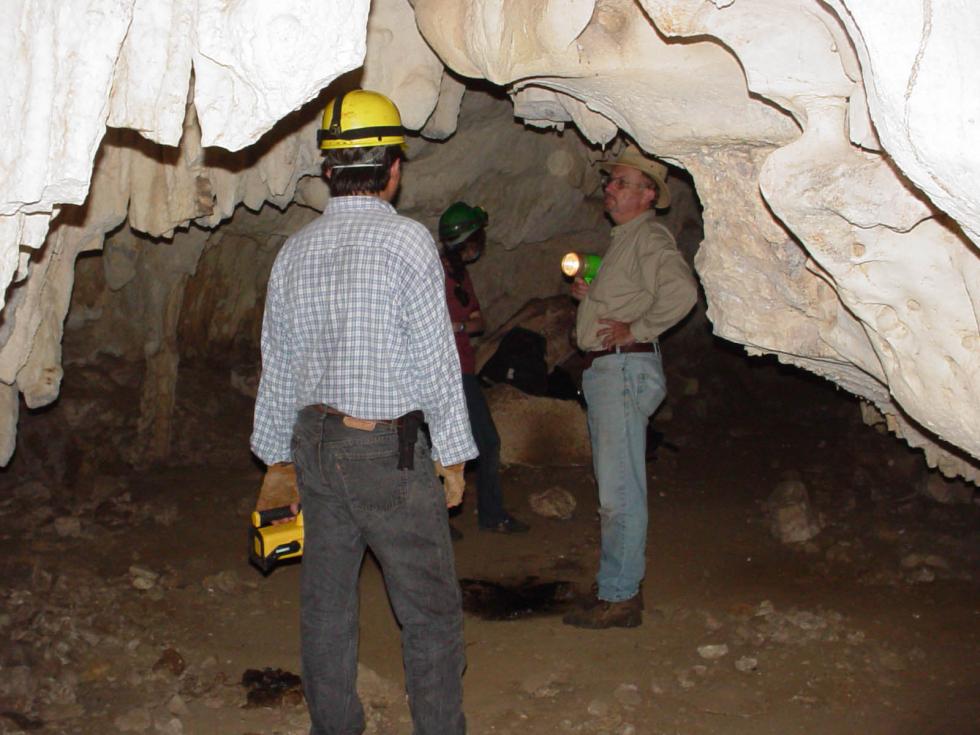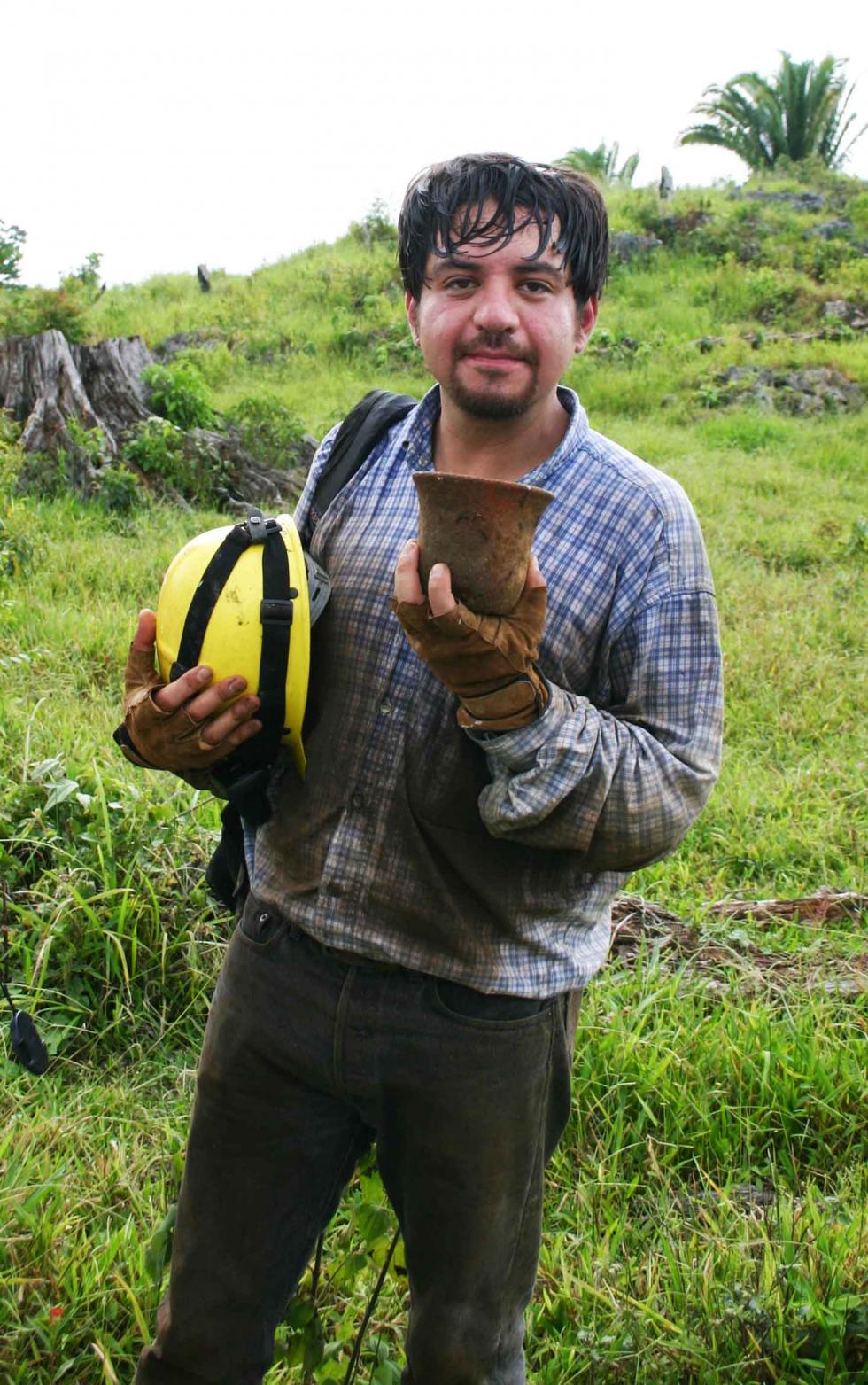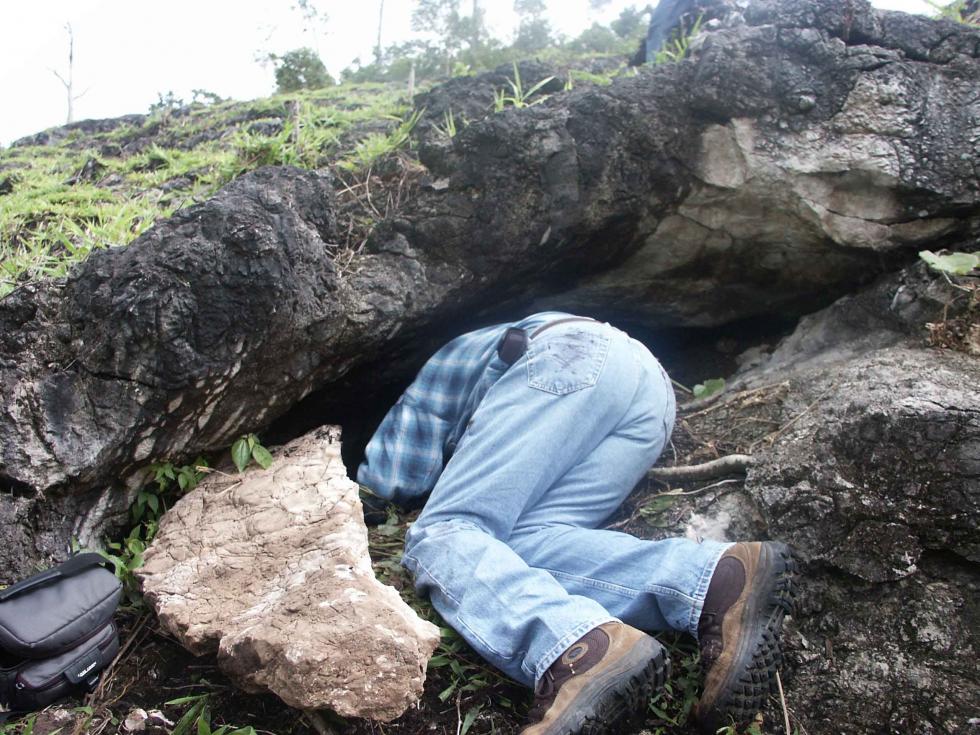Balam Na
Poptun, Peten, Guatemala - 2001, 2002, 2004
Cal State L.A. became heavily involved in Central American field projects in 2001 with funds from DR1, the Danish national television station, and Copenhagen’s largest newspaper. Based on Danish explorer Christian Chistensen’s report of a number of pecked faces in a cave located approximately 16 km northwest of the town of Poptun in southeastern Peten, Guatemala an initial appraisal of the site was made. This led to an archaeological reconnaissance being carried out in March and April 2001. The study quickly expanded to include the entire hill in which the original cave is set. In total, four caves were investigated and two others located in the hill which has been named Balam Na. Cave 1, some 40 m in length, was mapped, surface artifacts were collected, and the rock art was systematically recorded. Cave 2, located close to Cave 1 at a slightly lower level, was only 16 meters long but contained an interesting cache of vessels with human bone packed around them. Cave 3 was a small, two chambered cave only 6 m in length. It contained ten body sherds of an unslipped, jar. Cave 4 contained a number of tombs created by blocking off sections of the cave with crude walls. All had been looted in antiquity but a radiocarbon date places the tombs at the end of the Middle Preclassic around 400 B.C. In 2004, the project investigated the nearby surface site of Sabalam, a complex of four small hills with caves running through them.
Figure 1: Map of Guatemala showing the location of Balam Na.
Sergio Garza was the only student taken the first season but additional students were added in subsequent years. Garza used the research to win a Sally Casanova Pre-Doctoral Fellowship and was accepted into Ph.D. programs at U.C. Riverside and Boston University. Besides supplying students with data for their papers at the Annual Meeting of the Society for American Archaeology (SAA), the project also produced a number of publications. The most extensive was a detailed description published in Atlas Arqueológico de Guatemala, Reporte 17. An article about the burials in Balam Na Cave 4 appeared in the California Anthropologist and the results of a speleothem inventory in Cave 1 were published in the book, Stone Houses and Earth Lords.
An unintended benefit of the project was the national and international publicity focused on Cal State L.A. archaeology. The project was a special event of the newspaper, the Jyllands Posten,which sent two reporters and a photographer to the field with us. Multiple stories were beamed back by satellite phone each day and appeared in the morning edition. The paper did follow-up stories on the results in each of the subsequent years. Danish national television carried stories on their website and aired a two part special on their program DR Explorer. Finally, a reporter for Science Newsattended our SAA session in 2002 and featured cave archaeology in the cover story for their May 18th edition. The story mentioned students Shankari Patel and Garza by name, as well as professors James Brady and Manuel Aguilar.
Figure 2: The area around Balam Na is riddled with caves. After exploring this cave, the project decided not to include it among the caves to be investigated. | Figure 3: Dr. Brady and his daughter, Alezandra, recover a broken tinaja from a ledge in the cave. |
Figure 4: The project conducted a surface survey of Balam Na Cave 1 and recovered over 450 sherds from this small cave. | Figure 5: This pecked face of a feline gave Balam Na its name which means “Jaguar House.” |
Figure 6: Cesar Espinoza works to restore a small jar recovered from Balam Na Cave 4. | Figure 7: Cesar Espinoza with a Preclassic vessel that he discovered in one of the caves at Sabalam. |
Figure 8: Sergio Garza cleans and arranges the pieces of a vessel before attempting to glue the vessel together. | Figure 9: Espinoza, Brady and Garza displaying the restored pottery from the caves of Balam Na that are now in the regional museum in Dolores, Peten. |
Figure 10: Map of Sabalam showing the four hills and the caves running through them. | Figure 11: All of the caves at Sabalam were small and difficult. |

